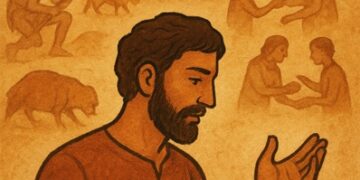Mathematics and physics are two of the oldest and most fundamental sciences that have, and continue to, play crucial roles in human civilization. While they are deeply interconnected, historical evidence strongly suggests that humans developed mathematics long before they systematically explored the principles of physics. This article delves into the reasons behind this sequence, the historical evolution of both disciplines and examples that illustrate this progression.
The Origins of Mathematics: A Practical Necessity
Mathematics emerged from the need to address everyday challenges of early human societies. The primary driving forces were survival, trade, agriculture, and social organization. Early humans needed ways to count, measure, and keep track of quantities long before they delved into the systematic study of natural phenomena.
- Counting and Numerical Systems
The first mathematical concept humans developed was counting. Evidence of this can be traced back to artifacts like the Ishango bone, discovered in Africa and dated to approximately 20,000 years ago. This bone features a series of notches that many believe represent tally marks, possibly used for counting or tracking lunar cycles.
- Geometry for Agriculture and Architecture
As humans transitioned to agricultural societies, geometry became essential. Measuring land, dividing plots, and constructing shelters required an understanding of basic shapes, areas, and proportions. Ancient Egyptians, for instance, developed practical geometric techniques to survey and allocate farmland after the annual flooding of the Nile River.
- The Advent of Written Numbers
Civilizations like the Sumerians and Babylonians formalized mathematical systems around 3000 BCE. They developed place-value systems and used mathematics for administrative tasks, such as managing taxes and trade records. Babylonian clay tablets reveal advanced calculations, including quadratic equations and early trigonometry, centuries before any formal understanding of physical laws.
The Delayed Emergence of Physics
Physics, as the study of nature and its underlying laws, emerged much later in human history. Early societies observed and recorded natural phenomena, such as the motion of celestial bodies, weather patterns, and the behavior of objects, but these observations were often explained through mythology or religion rather than scientific inquiry.
- Philosophical Beginnings
Physics began as a philosophical endeavor in ancient Greece. Thinkers like Aristotle (384–322 BCE) speculated about the nature of motion, matter, and the cosmos, but their approach lacked experimentation or mathematical rigor. For example, Aristotle believed that heavier objects fell faster than lighter ones—a claim that would not be disproven until Galileo Galilei’s experiments in the 16th century.
- The Role of Mathematics in Physics
The systematic study of physics only began when mathematics was applied to describe natural phenomena. For example, Archimedes (287–212 BCE) used geometric principles to explain concepts like buoyancy and levers. However, it wasn’t until the scientific revolution, driven by figures like Galileo and Isaac Newton, that physics became a mathematical science. Newton’s laws of motion and universal gravitation, published in Principia Mathematica (1687), are prime examples of mathematics enabling the formalization of physical theories.
Examples Illustrating the Primacy of Mathematics
- Calendars and Astronomy
Ancient civilizations like the Maya, Egyptians, and Babylonians developed sophisticated calendars based on their mathematical observations of celestial patterns. This predates any detailed understanding of the physical forces governing planetary motion, such as gravity.
- Construction and Engineering
The construction of the pyramids in Egypt (~2600 BCE) required precise calculations of angles, weights, and dimensions. These achievements were rooted in mathematics rather than an understanding of physics principles like statics or dynamics.
- Trade and Commerce
The use of standardized weights, measures, and currencies in ancient Mesopotamia (~3000 BCE) showcases the reliance on arithmetic and basic algebra. Physics concepts, like the mechanics of levers and pulleys for trade-related construction, were not yet formally understood.
Why Did Mathematics Come First?
The sequence of development can be attributed to the following factors:
- Accessibility and Simplicity
Mathematics deals with abstract concepts like numbers, shapes, and patterns, which are observable and manipulable without tools or experiments. Physics, on the other hand, often requires empirical observation, experimentation, and complex instrumentation to uncover its principles.
- Immediate Utility
Early societies needed mathematics for survival tasks such as measuring crops, building shelters, and conducting trade. Physics, while significant, did not have as direct an impact on daily life in its early stages.
- Philosophical Barriers
Physics required a shift from mythological explanations of nature to systematic scientific inquiry. This transition took millennia and depended heavily on the pre-existing mathematical framework.
Conclusion
The historical record clearly shows that humans developed mathematics long before physics. Driven by necessity, early societies used mathematics to solve practical problems and organize their world. It was only after centuries of mathematical advancement that humanity began to systematically study and understand the natural laws governing the universe. Today, mathematics and physics are inseparable, but their origins remind us of the gradual and evolving nature of human knowledge.
The writer is member, Faculty of Mathematics, Department of General Education SUC, Sharjah, UAE. reyaz56@gmail.com




